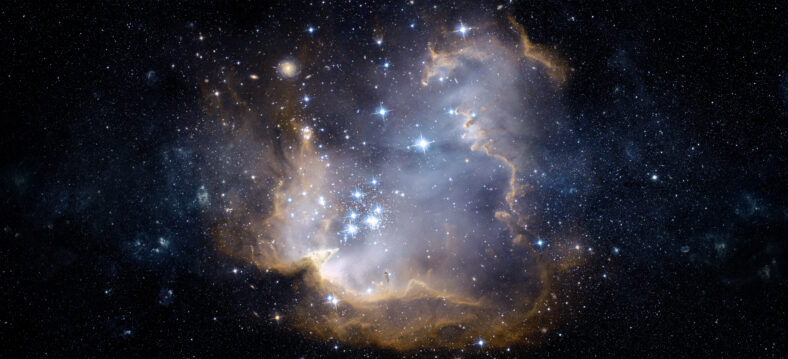The Euclid Space Telescope Made New Discoveries In The Hunt For Dark Matter And Dark Energy

The European Space Agency’s Euclid space telescope was built to study the dark matter and dark energy that make up much of the universe.
It has captured a 3D map of 26 million galaxies across the universe, with the farthest of those up to 10.5 billion light-years away.
The telescope was launched less than two years ago but has already prompted new discoveries. It has just released its first major observations. Astronomers hope it will reveal more information about dark matter and dark energy.
The dark universe is believed to make up 95 percent of the cosmos. Dark matter, an invisible substance that takes up space but does not interact with light, is suggested to make up 27 percent of the universe.
Dark energy, which is thought to drive the accelerating expansion of the universe, makes up 68 percent.
“With the release of the first data from Euclid’s survey, we are unlocking a treasure trove of information for scientists to dive into and tackle some of the most intriguing questions in modern science,” said Carole Mundell, ESA’s director of science.
“With this, ESA is delivering on its commitment to enable scientific progress for generations to come.”
The new batch of survey data has allowed astronomers to create a detailed catalog of more than 380,000 galaxies of different shapes and sizes. It represents just 0.4 percent of the total number of galaxies that will be imaged over Euclid’s lifetime.
With the help of AI models and inspections by citizen science volunteers, the astronomers were also able to identify 500 new gravitational lensing events, where light from distant galaxies traveling toward the Earth is bent by normal and dark matter.

Sign up for Chip Chick’s newsletter and get stories like this delivered to your inbox.
Further images showed dark matter in massive galaxies warp space and magnify more distant galaxies behind them.
Measuring the distortion lets researchers measure dark matter. However, this effect is rare because the galaxies must be perfectly aligned in order to produce it.
“This is the significance of our strong gravitational lenses,” said Stephen Serjeant, a professor of astronomy at the Open University.
“It’s the start of an avalanche of new discoveries, and among this avalanche will be beautiful clues about what dark matter is made of.”
Euclid is expected to capture images of more than 1.5 billion galaxies over the next six years, exposing even more mysteries about the universe. The next data release is set for 2026. It will cover an area 30 times larger than this latest one.
The telescope was launched in July 2023 and started its routine observations on February 14, 2024. The Euclid Consortium, a group of more than 2,000 scientists from 300 institutes in 15 European countries, the U.S., Canada, and Japan, is responsible for operating the telescope and analyzing the data it gathers.
You can read more here.
More About:News





